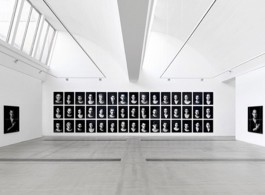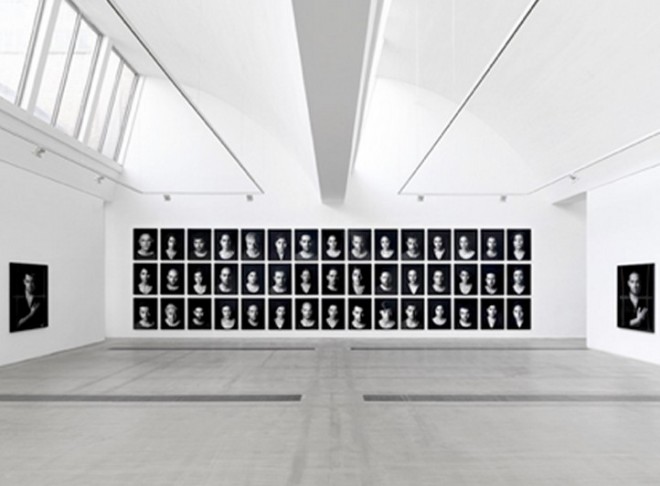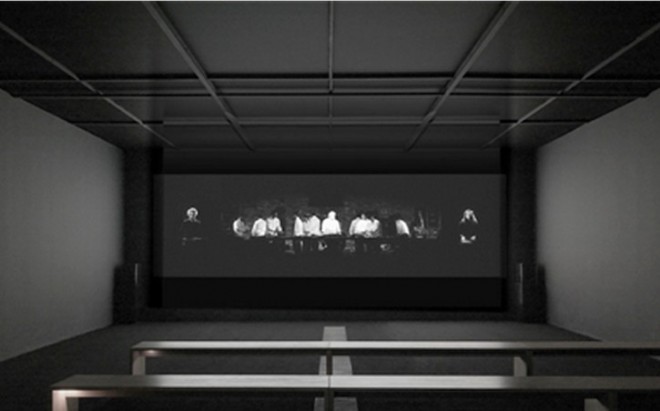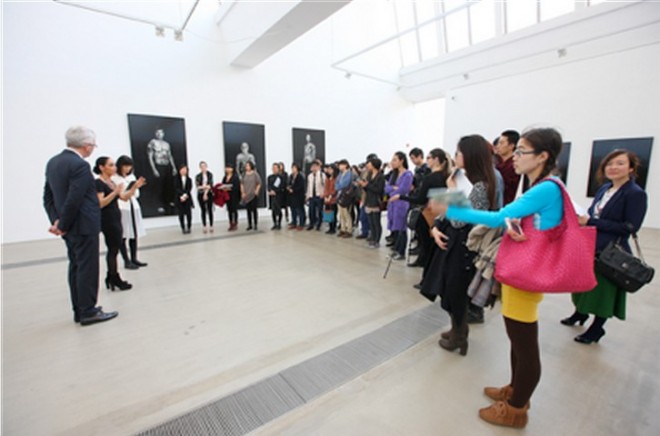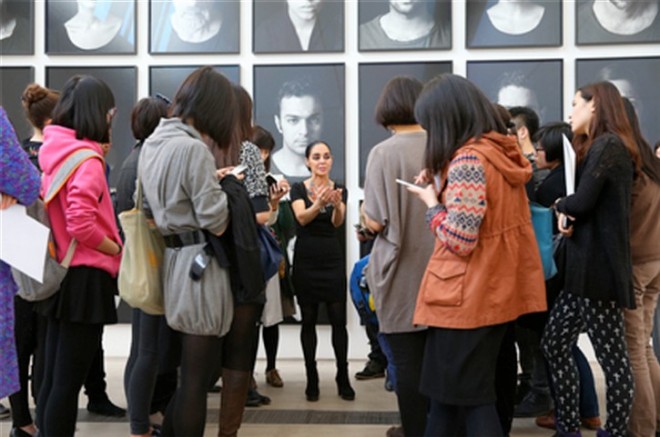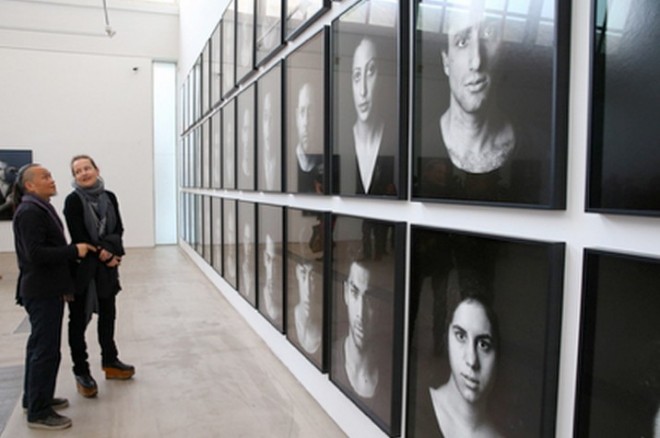Press Release
Faurschou Foundation Beijing is pleased to present Shirin Neshat‘s The Book of Kings. The exhibition features a new body of photography works and a video installation by the acclaimed Iranian artist. Her work interweaves an austere yet sensuous visual language with music, poetry, and history, as well as the political and philosophical.
Neshat’s The Book of Kings is inspired by the epic poem “Shahnameh” (The Book of Kings), by the 11th-century poet Ferdowsi, which chronicled Iran through the 7th-century Islamic conquest of Persia. This photography series memorializes the recent Arab Spring, Iranian Green Movement, and their mass protests against corrupt regimes, honoring the martyrdom of unknown citizens who sacrificed themselves seeking justice across the Middle East.
Three groups of black and white portraits comprise this series. Hand-annotated with poetry and prison writings in Farsi calligraphy, they are “The Villains,” “The Patriots,” and “The Masses.” In these works, the individual becomes monumental and the political becomes personal.
The villains look their part. Phalanxes of soldiers riding into battle adorn their bare chests, arms, and legs. The surface of the photographs is painted with depictions of the ancient tragedy, chronicled in “Shahnameh,” which parallels the present. The only color in the overlaid drawings is red for the blood of the martyrs spilled defending ancient Persia, implicitly evoking the martyrs of today.
“The Patriots” gaze earnestly ahead, hands on hearts, adorned with calligraphic renderings of Persian poetry, and lines from Iranian prison memoirs. But who are the Patriots? Are they the critics who seek to reform the system? Are they unquestioning supporters of the current regime? Or, perhaps they are both, and history itself turns on this irresolvable ambiguity.
“The Masses” are represented by a grid of 45 portraits. Paying homage to these unknown citizens who demonstrated the power of the powerless, she captures their faces almost void of expression, as if history were waiting to be inscribed upon them. Will they become martyrs, patriots, or villains? Perhaps Neshat leaves this question intentionally open.
The three-channel video OverRuled (2011) presents a modern remake of the trial of 10th-century Sufi dervish martyr Mansur Al-Hallaj, accused of heresy and executed by public dismemberment. Al-Hallaj’s belief in an unmediated spiritual connection to God was deemed blasphemous by the Caliphate, yet Neshat transforms his story into an allegory of spiritual overcoming that still resonates today.
Neshat’s interlacing of the historical and the contemporary valorizes the vulnerable yet tenacious ways that people struggle to reclaim their agency, offering striking visual and aural narratives of how the human spirit can reclaim its dignity even in the face of brutal repression.
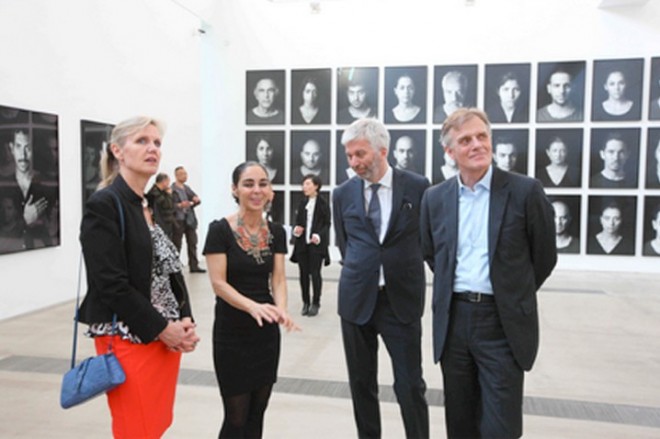
丹麦驻华大使裴德盛先生和夫人毕姬塔女士,艺术家西丽·娜沙特女士,林冠艺术基金会创始人严思·法斯高先生 | Danish Ambassador to China Mr. Friis Arne Petersen and his wife Mrs Birgitte Wilhelmsen, Artist Shirin Neshat, Founder of Faurschou Foundation Mr. Jens Faurschou
Shirin Neshat
Born in Iran, Shirin Neshat moved to the US in 1974, where she studied art. The historic rupture of the 1979 Islamic Revolution in Iran changed her life and creative practice. She gained international prominence with Women of Allah (1995). She won the Golden Lion at the Venice Biennale (1999) for Turbulent, and the Silver Lion at the International Venice Film Festival (2009) for Women without Men. Solo exhibitions include shows at the Museo de Arte Moderno, Mexico City; Walker Art Center, Minneapolis; Castello di Rivoli, Turin; and Serpentine Gallery, London. She participated in the New Orleans Biennial (2008), Documenta XI, Whitney Biennial (2000), and the Venice Biennale (1999) and many others. She lives and works in New York City.



